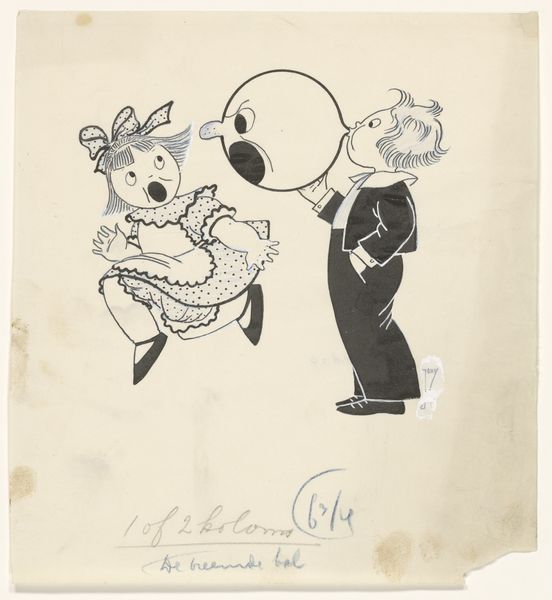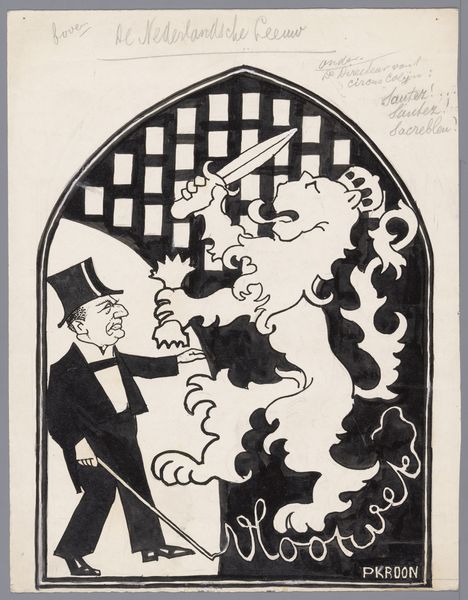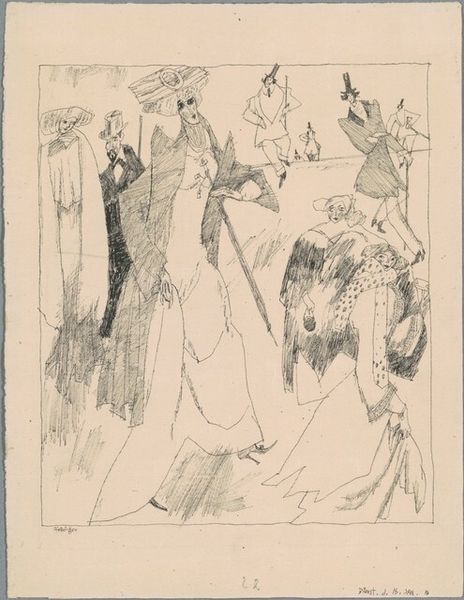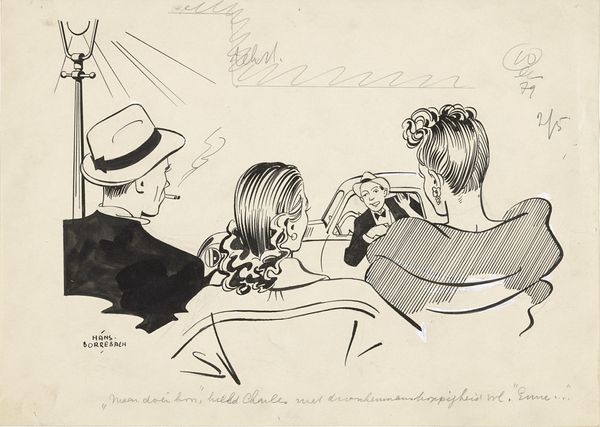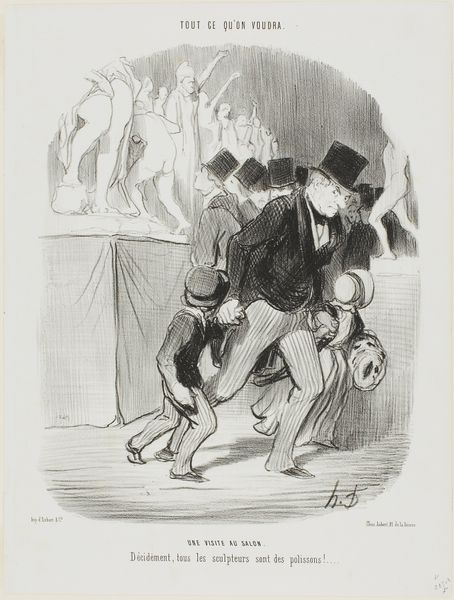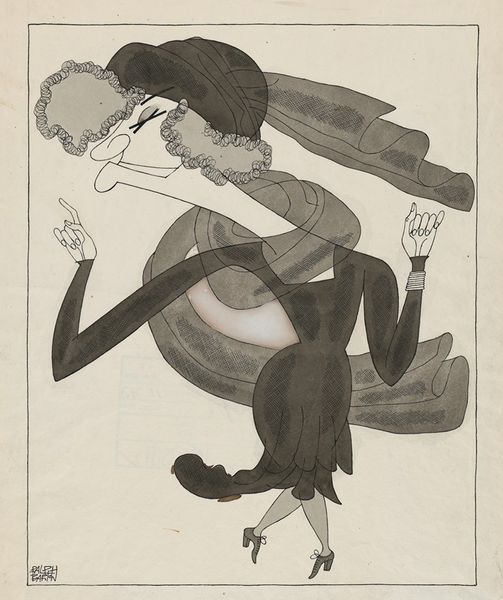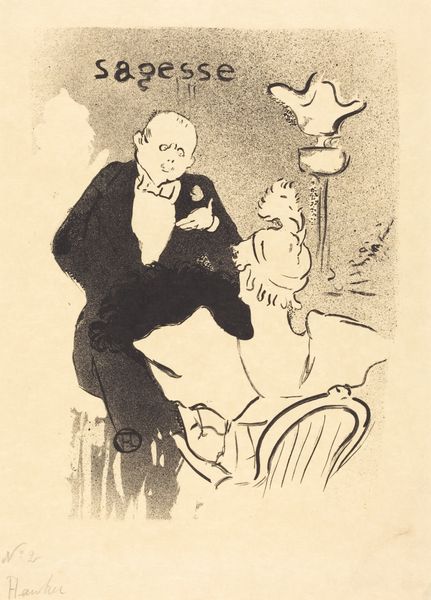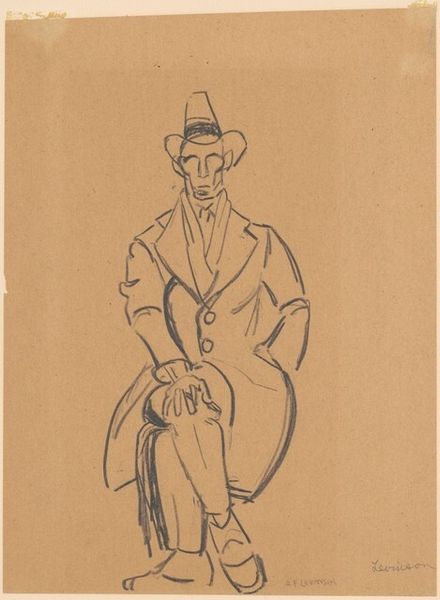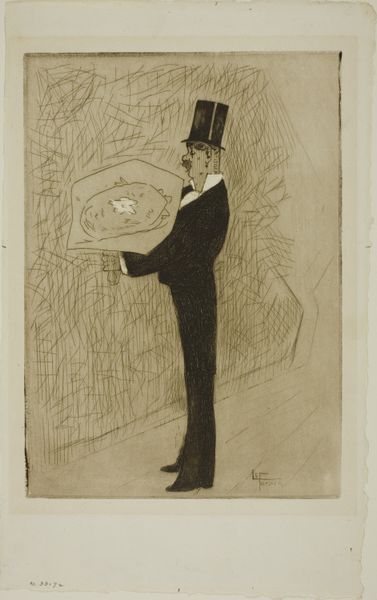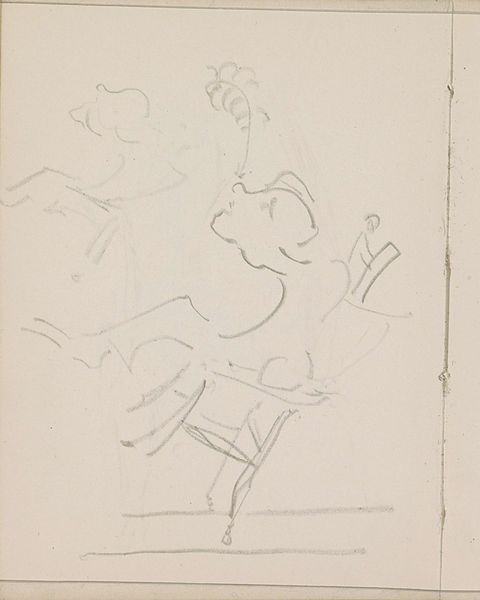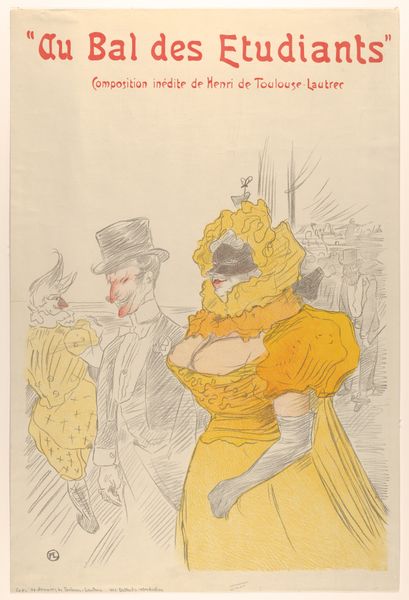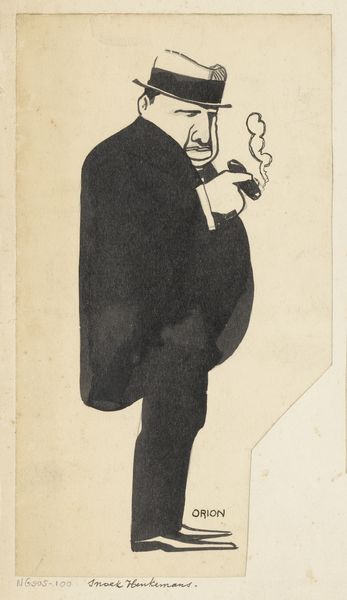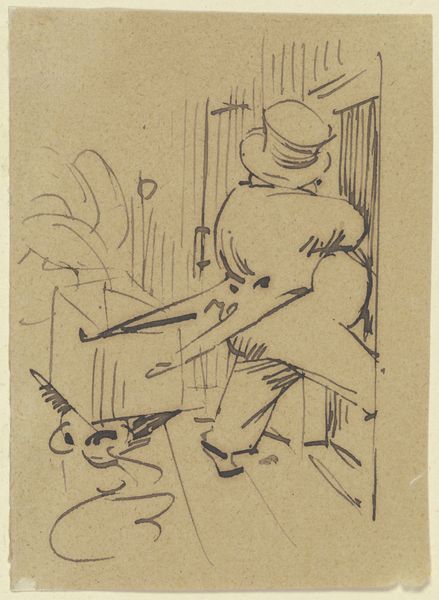
Dimensions: 37 x 28 cm
Copyright: Public domain
Henri de Toulouse-Lautrec made this artwork, "La Goulue et Valentin," through lithography, a printmaking process using a flat stone or metal plate. The magic of lithography lies in its reliance on the mutual repulsion of grease and water. Toulouse-Lautrec would have drawn the image onto the plate with a greasy crayon or ink, then treated the surface so that ink would only adhere to the drawn areas. When printed, the image transfers to paper, creating a reversed impression. The quality of the lines – thin, scratchy, full of nervous energy – are due to this technique. Lithography's ability to produce multiple impressions made it perfect for advertising. It was through posters like this, depicting performers at the famous Moulin Rouge, that Toulouse-Lautrec became one of the most important artists of his time. Thinking about this print, it is impossible to ignore the relationship between art, labor, and the rise of mass culture in the late 19th century. Through making, an artwork like this comes to embody the spirit of its age.
Comments
No comments
Be the first to comment and join the conversation on the ultimate creative platform.
